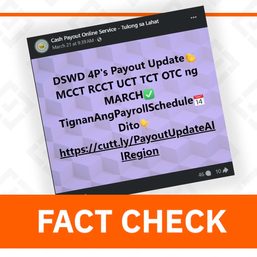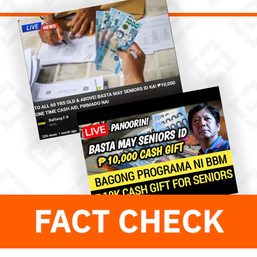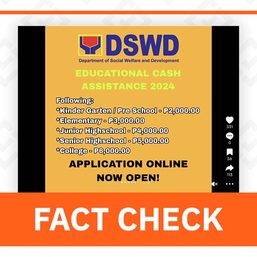SUMMARY
This is AI generated summarization, which may have errors. For context, always refer to the full article.
As Metro Manila and nearby provinces are placed under modified enhanced community quarantine (MECQ) again, more than 4.5 million Filipino households are still waiting for the promised second tranche of cash aid by the government.
The Department of Social Welfare and Development (DSWD) had said on July 16 that it was targeting to complete by July 31 the distribution of the second tranche of its emergency subsidy program (ESP) through manual and digital payouts.
DSWD spokesperson Irene Dumlao that time said that for no-internet, conflict-affected, and geographically isolated areas, the distribution will be completed by August 15.
But latest data from the agency showed that only 9.6 families or about 69% of the 14.1 million beneficiaries have so far received the 2nd tranche of the ESP. DSWD also reported that it had distributed a total of P62.5 billion as of August 3.
It remains unclear if the remaining 31% of the beneficiaries are from the hard-to reach areas.
Since Monday, August 3, reporters have been asking the agency why it failed to meet its self-imposed deadline. But Dumlao only replied: “Good morning. Our payouts are still ongoing.”
Initially, the DSWD said about 17 million households would receive P5,000 to P8,000 in aid for the month of May.
“The initial target for waitlisted was 5 million household-beneficiaries, however, submissions from LGUs (local government units) only account to 3.2 million,” Dumlao said.
More efficient distribution?
On April 28, DSWD Secretary Rolando Bautista announced that the agency had partnered with the Department of Information and Communications Technology to facilitate the automated distribution of the second tranche.
In line with the promise to make the distribution of the May aid faster and more efficient, the DSWD launched the app “ReliefAgad” to allow families with cash cards to register online.
Instead of transferring cash to local government units, which caused alleged anomalies, the agency’s funds would go straight to the Land Bank of the Philippines, to be disbursed by partner financial service providers like GCash and PayMaya.
After almost a month and a half of delay, the DSWD began distributing the second tranche of cash aid, starting with the beneficiaries of the Pantawid Pamilyang Pilipino Program (4Ps), on June 11.
In a previous interview with Rappler, Sonny Africa, executive director of advocacy group IBON Foundation, said that changing the mechanism of distribution had created more problems.
Africa questioned the government’s move to create a new system when it already had infrastructure during the first tranche.
“If they were able to give the first tranche, they already have the infrastructure. So if their issue is who gets what, use the list. There’s no need to create a new one. If you have an existing infrastructure and you’re looking for the names of people, you can go back there,” Africa said.
According to Africa, the government should be focusing on figuring out why there are still beneficiaries who have not yet received the financial aid.
“Make up for the fact why there are still people who have not received the financial aid yet. There’s no need to reinvent the wheel. If it’s really a problem of documentation, the fact that there were some 18 million who received financial aid through various mechanisms, that means they already have the documentation,” Africa said in a mix of English and Filipino.
During the House hearing on DSWD’s government subsidy program on July 16, Undersecretary Danilo Pamonag cited 3 factors causing the delay in the distribution of the payouts:
- Mobility constraints in reaching far-flung areas
- Difficulty in delivering subsidy to conflict-affected areas
- DSWD personnel are still at risk of being infected, and may, in turn, infect their clients with the virus
– Rappler.com
Add a comment
How does this make you feel?



![[Time Trowel] Evolution and the sneakiness of COVID](https://www.rappler.com/tachyon/2024/02/tl-evolution-covid.jpg?resize=257%2C257&crop=455px%2C0px%2C1080px%2C1080px)







There are no comments yet. Add your comment to start the conversation.